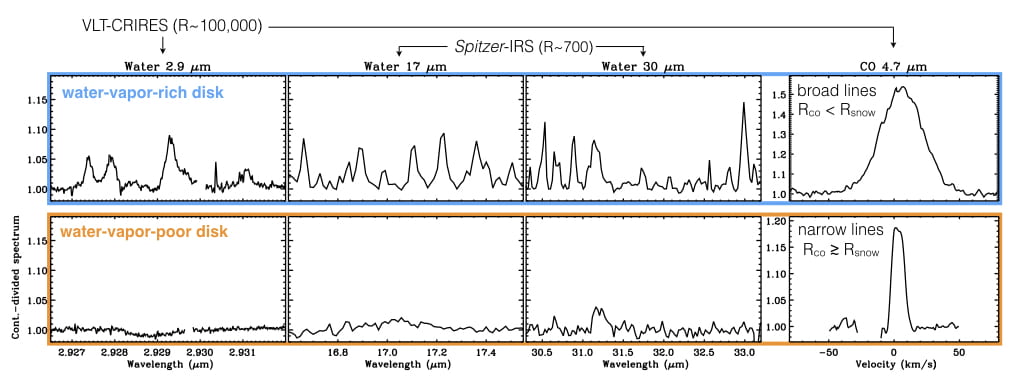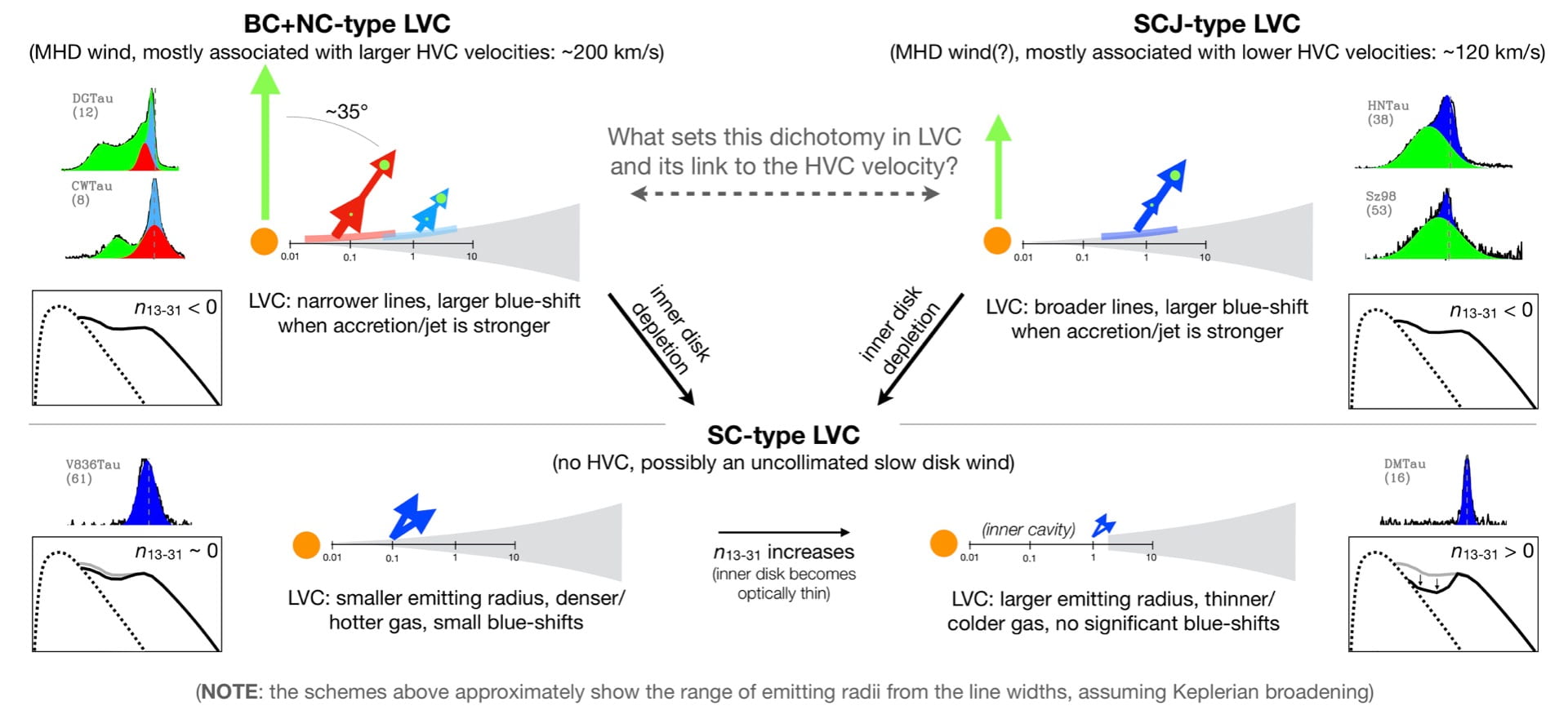We research young Protoplanetary Disks where Exoplanets are forming. Our research involves:
- The evolution of the 0.01-10 au orbital disk region as studied through high-resolution gas spectroscopy
- A specific focus on infrared molecular spectroscopy that probes the disk physical and chemical evolution during exoplanet formation
- A synergic approach to link to tracers at multiple wavelengths (UV, optical, near- and mid-infrared, and radio), multiple phases (gas and solids) and multiple processes (gas in the disk and in winds/outflows)
- The development of tools for high-resolution spectroscopy reduction and analysis; in particular, we specialize in multi-component spectral fitting techniques for medium to high resolving powers (from R~700 of Spitzer-IRS, to R~100,000 of VLT-CRIRES)
- Monitoring of biologically-relevant gas chemistry (water and organic molecules) in planet-forming regions as affected by luminosity outbursts in young stars
- Observations of mm-cm dust emission, to study pebble formation in disks and the water snow line at the time of planetary assembly
Below, you find some examples of our recent and ongoing research.
THE PHYSICAL AND THERMO-CHEMICAL EVOLUTION OF EXOPLANET-FORMING DISKS AT 0.01-10 AU
The top figure shows the temperature-radius (T-R) diagram of carbon monoxide (CO) gas in protoplanetary disks (Banzatti & Pontoppidan 2015). The bottom figure shows representative water and CO spectra from a large survey combining Spitzer-IRS and VLT-CRIRES observations (Banzatti et al. 2017). CO is a ubiquitous tracer of molecular gas in disks, and a sensitive thermometer of the radiation environment. The diagram above is constructed from spectroscopy surveys of rovibrational CO emission obtained with CRIRES at the Very Large Telescope, which currently provides the sharpest and most sensitive view of molecular gas in inner disks. The diagram unveils an empirical temperature profile for inner disks around solar-mass stars between 0.03 and 3 AU. Between 2 and 25 AU, an inversion in the temperature profile reveals disks that have large depletions in their inner dust and gas radial structures. The T-R diagram of CO emission provides an empirical sequence of disk gap opening in protoplanetary disks, spanning the entire planet-formation region (~ 0.1-10 AU) and evolutionary stages from primordial to debris disks. In the figure above, the CO sequence is put into context of the Solar System planets and of the observed distribution of massive exoplanets that may migrate and open gaps in disks (with Msini > 0.5 Jupiter masses, from exoplanets.org).
A third paper demonstrates that the CO sequence displayed in the top figure is tracing the depletion of dust at planet-forming radii, in the disks of Herbig stars: Banzatti et al. 2018 (figure here above).
A fourth paper explored in great detail models of Herbig disks to interpret the observational evidence of inner disk evolution toward cavities: Bosman, Banzatti et al. 2019 (figure below).
THE LINKED STRUCTURE AND EVOLUTION OF INNER DISKS, WINDS, AND JETS
We have applied our multi-component fitting techniques, developed for IR molecular spectra, to the analysis of optical spectra of forbidden Oxygen emission [OI] that probes outflows from disks. For the first time, we have systematically studied at high resolution the kinematics of different outflow components (winds and jets) for a large sample of objects. The analysis revealed the existence of previously-unknown relations between these components and inner disk accretion and evolution, as illustrated in the figure above. The analysis and results are published in Banzatti et al. 2019.




